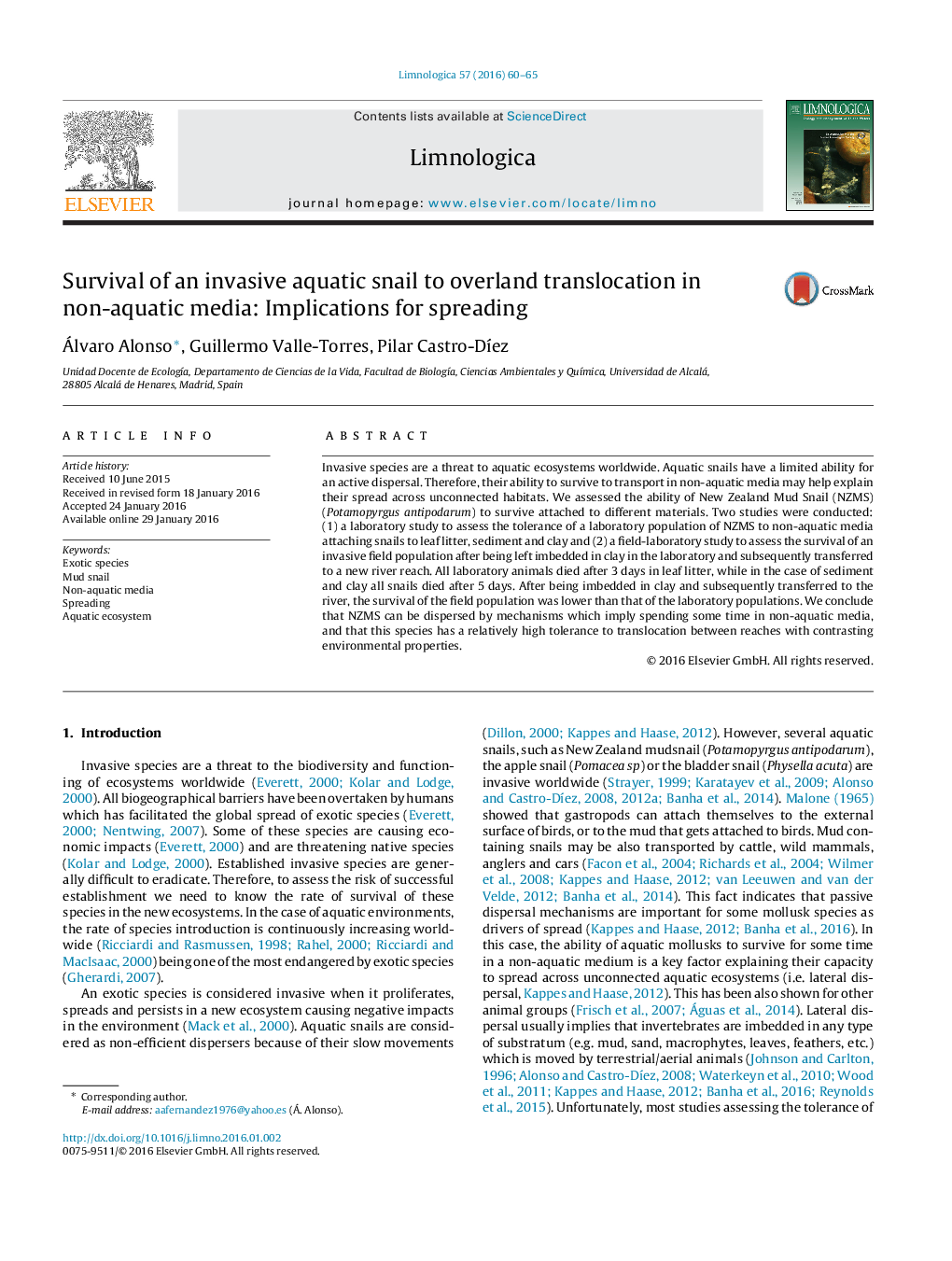| Article ID | Journal | Published Year | Pages | File Type |
|---|---|---|---|---|
| 4400327 | Limnologica - Ecology and Management of Inland Waters | 2016 | 6 Pages |
Invasive species are a threat to aquatic ecosystems worldwide. Aquatic snails have a limited ability for an active dispersal. Therefore, their ability to survive to transport in non-aquatic media may help explain their spread across unconnected habitats. We assessed the ability of New Zealand Mud Snail (NZMS) (Potamopyrgus antipodarum) to survive attached to different materials. Two studies were conducted: (1) a laboratory study to assess the tolerance of a laboratory population of NZMS to non-aquatic media attaching snails to leaf litter, sediment and clay and (2) a field-laboratory study to assess the survival of an invasive field population after being left imbedded in clay in the laboratory and subsequently transferred to a new river reach. All laboratory animals died after 3 days in leaf litter, while in the case of sediment and clay all snails died after 5 days. After being imbedded in clay and subsequently transferred to the river, the survival of the field population was lower than that of the laboratory populations. We conclude that NZMS can be dispersed by mechanisms which imply spending some time in non-aquatic media, and that this species has a relatively high tolerance to translocation between reaches with contrasting environmental properties.
